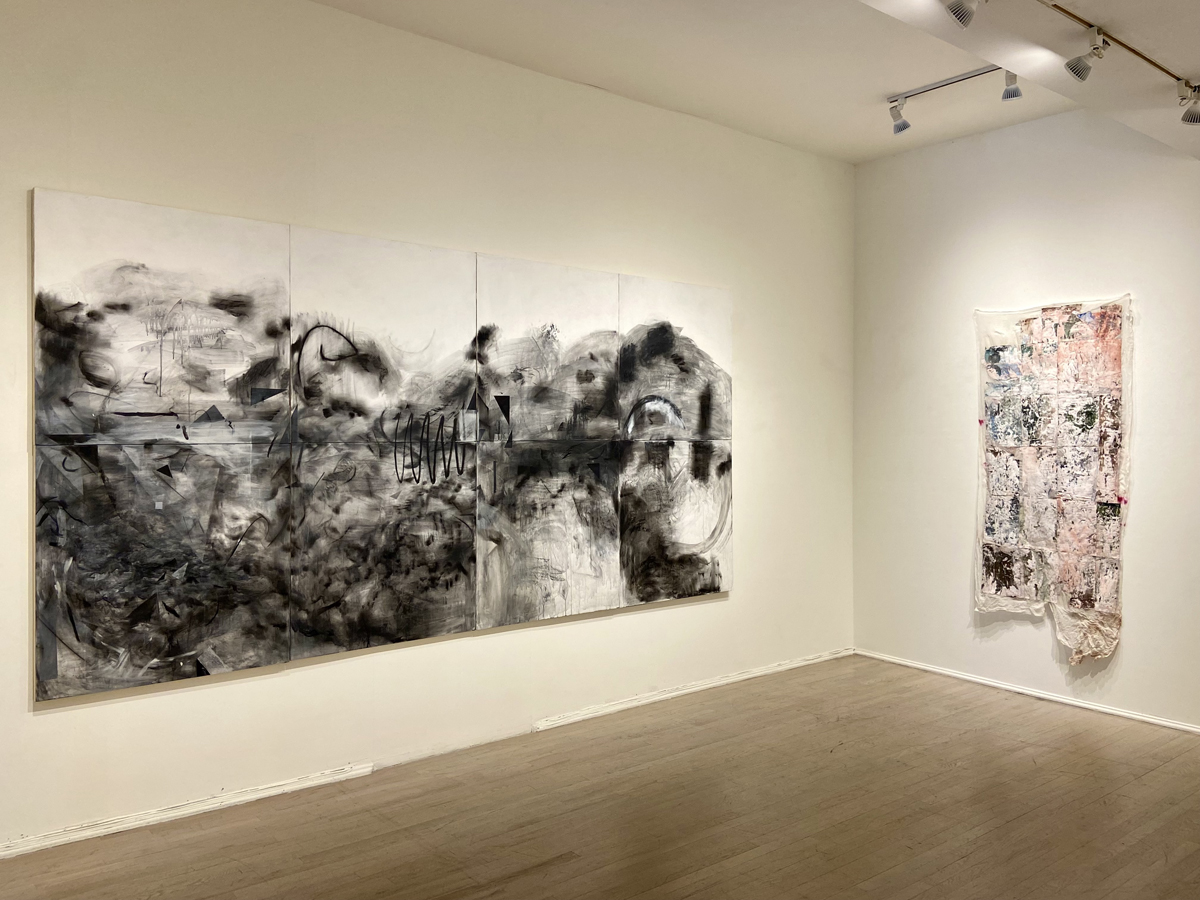The storied and long-running C. Grimaldis Gallery is a welcome respite from the sometimes chaotic nature of its Mt. Vernon neighborhood. Sitting at the intersection of Centre and Charles Streets, the gallery exists at a crossroads of the many different worlds within Baltimore. With Peabody student life, commuter traffic, and small throngs of amateur springtime photographers, the scene can be bustling.
During my visit, the gallery’s large picture window acted as a showcase for the Charles Street tableau, and the ambient light of budding street tree flowers paired nicely with the engrossing scale and tenor of the work in Echoes, the gallery’s conversational new two-person exhibition. With its gritty textures, lyrically rhythmic compositions, and hints of cherry-blossom pink popping up among an otherwise muted palette, it’s the perfect spring show for its context.
Echoes concentrates on the idea of repetition and expansiveness within the work of artists Ara Ko and Elena Kovylyaeva. Whether it is the forest of mark making of Ko or the encompassing confrontation of Kovylyaeva, the artists recall the work of Anselm Kiefer, Gerhard Richter, and at times Lee Bontecou, among many others. Yet in their overwhelming fields of visual language, there is also a space wholly their own with the nuance of each artist’s character.
Lauded in the gallery literature as two artists who “tell tales of material sensibility,” in this debut, the artists occupy opposite poles of an unconsciously related and serendipitous spectrum. Like all well curated shows, there is a conversation happening within the space.















